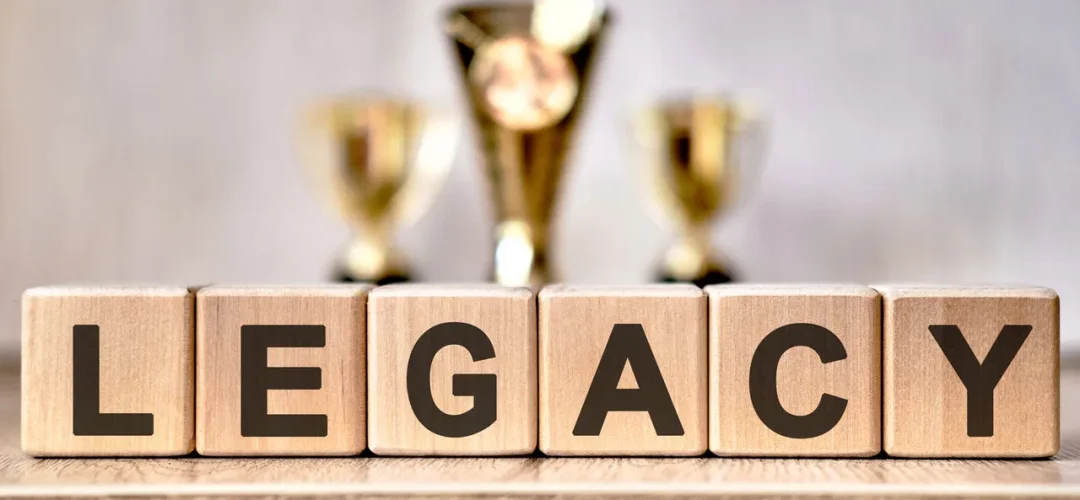Leaving a legacy is about more than just dividing your assets after you’re gone. It is a profound act of love and responsibility that safeguards your loved ones, communicates your values, and preserves the fruits of your life’s work. A wise estate plan ensures your final wishes are honored, minimizes financial stress and conflict for your family, and manages the complexities of law and taxes.
Many people view estate planning as something reserved for the ultra-wealthy or the elderly, but the truth is, if you own anything or have loved ones you want to protect, you need a plan. Procrastination is the single greatest risk to your legacy. This comprehensive guide breaks down the essential components, steps, and pitfalls to avoid as you craft a thoughtful and effective estate plan.
Defining Your Vision: Estate vs. Legacy Planning
Before drafting any documents, you must first define what you want to achieve. The modern approach distinguishes between two interconnected concepts:
- Estate Planning: This focuses on the tangible assets—property, investments, financial accounts, and personal belongings. Its primary goal is the efficient management and transfer of these assets upon your incapacitation or death, often aiming to minimize taxes and avoid probate (the public, court-supervised process of validating a Will).
- Legacy Planning: This goes deeper, focusing on the intangible assets—your values, beliefs, life lessons, and philanthropic goals. It’s about establishing an ethical will, setting up a family foundation, or simply articulating your hopes and expectations for future generations.
A truly wise plan seamlessly integrates both. Your financial documents provide the resources, while your stated values provide the context and meaning behind the distribution.
The Core Components of an Effective Estate Plan
A robust estate plan is a collection of legal documents designed to cover three scenarios: incapacity, death, and asset distribution.
1. The Foundation: Last Will and Testament
Your Last Will and Testament is the cornerstone of your plan. It is a legal document that dictates:
- Asset Distribution: Who inherits your property and possessions that don’t pass by other means (like a trust or beneficiary designation).
- Guardianship for Minors: Critically, it names the individual you choose to be the guardian of your minor children or other dependents. Without a Will, the court makes this deeply personal decision.
- Executor/Personal Representative: It appoints a trusted person to manage your estate, pay debts, and distribute assets according to your wishes.
2. Planning for Incapacity: Directives and Power of Attorney
A complete estate plan must address the possibility that you may become temporarily or permanently unable to make decisions for yourself:
- Durable Power of Attorney (DPOA): This document grants a trusted agent (your “attorney-in-fact”) the legal authority to manage your financial and legal affairs if you are incapacitated. This is essential to ensure your bills are paid and investments are managed without court intervention.
- Advance Healthcare Directives: These are the documents that speak for your health and medical care:
- Health Care Power of Attorney/Proxy: Names the person you want to make medical decisions for you if you cannot.
- Living Will: Outlines your preferences regarding life-sustaining treatments (like artificial ventilation or feeding) in end-of-life situations.
3. Advanced Tools: Trusts
A Trust is a fiduciary arrangement that allows a third party (the Trustee) to hold assets on behalf of a beneficiary. Trusts are more complex than a Will but offer significant advantages:
- Probate Avoidance: Assets held in a Living Trust bypass the public and often time-consuming probate process, allowing for a quicker, private transfer to heirs.
- Asset Management: They allow you to control the timing of distributions (e.g., giving a child a portion of their inheritance at age 25, another at 30, and the remainder at 35).
- Tax Efficiency and Creditor Protection: Certain types of trusts can help minimize estate taxes or protect assets from creditors.
5 Steps to Plan Your Estate Wisely
Estate planning is a process, not a one-time event. Follow these steps for a thorough and effective plan:
Step 1: Inventory Your Assets and Debts
Before you can distribute your estate, you must know exactly what it contains. Create a comprehensive, detailed list of both tangible assets (real estate, vehicles, jewelry, collectibles) and intangible assets (bank accounts, investment portfolios, retirement accounts, life insurance policies, digital assets). Also, list all your debts (mortgages, loans, credit cards).
Step 2: Choose Your Key Players Wisely
You need to select trusted individuals for several critical roles. Consider not only their capability but also their relationship dynamics with your beneficiaries:
- Executor/Personal Representative: Manages the legal and financial process of closing your estate.
- Trustee: Manages assets held in a Trust for the benefit of your heirs.
- Guardians for Minors: The person who will raise your children.
- Financial and Health Care Agents (POA): The people who will make financial and medical decisions for you if you cannot.
Always name contingent (backup) individuals for every role in case your first choice is unable or unwilling to serve.
Step 3: Coordinate All Beneficiary Designations
This is where many plans fail. Many valuable assets—like Life Insurance Policies, IRAs, 401(k)s, and Annuities—pass to heirs based only on the beneficiary forms filed with the custodian, regardless of what your Will says. A wise plan ensures these designations are up-to-date and coordinated with the rest of your documents. For example, you may want to name your Living Trust as the beneficiary of your retirement account for better long-term control.
Step 4: Communicate Your Intentions
Lack of communication is a major cause of family disputes after a death. If appropriate, discuss your plan with your spouse, children, and key agents. Explain why you made certain decisions, especially regarding unequal distributions or specific gifts. An Ethical Will can be invaluable here, passing on the why of your life, not just the what of your wealth.
Step 5: Consult with Professionals
While do-it-yourself (DIY) Wills and trusts exist, the small cost savings are rarely worth the risk of a mistake. Estate and tax laws are complex and vary by jurisdiction. Engage an experienced estate planning attorney and coordinate with your financial advisor and tax professional to ensure your plan is legally sound, tax-efficient, and aligns with your overall financial strategy.
5 Common Estate Planning Mistakes to Avoid
Even the best intentions can be undermined by common errors. Avoid these pitfalls to protect your legacy:
- Failing to Plan for Incapacity: A Will only takes effect after death. Without a Durable Power of Attorney and healthcare directives, your family may face a costly, public conservatorship process just to pay your bills while you’re alive.
- Uncoordinated or Outdated Beneficiary Designations: Forgetting to update a life insurance or IRA beneficiary after a major life event (marriage, divorce, birth of a child) can mean your assets go to an ex-spouse or an unintended relative, completely overriding your Will.
- Failing to Fund a Trust: Creating a beautiful Trust document is only half the battle. If you don’t legally retitle assets (like your house or bank accounts) into the name of the Trust, it remains an empty shell, and those assets will still go through probate.
- Choosing the Wrong Fiduciaries: Selecting an executor or trustee based solely on sentimentality (e.g., naming your oldest child) can be a huge error if that person lacks the temperament or financial know-how for the job. These roles require significant time, organization, and emotional resilience.
- Setting and Forgetting: An estate plan is not a static document. Life events (births, deaths, marriages, divorce, moving to a new state), changes in assets, and shifts in tax laws (like adjustments to the federal estate tax exemption) all necessitate a review. You should aim to review and update your plan every 3 to 5 years, or immediately after a major life change.
Ethical and Emotional Considerations
Estate planning is deeply personal and involves ethical obligations, especially regarding fairness and family dynamics.
- Testamentary Capacity: It is an ethical and legal necessity that you have the mental capacity to understand your assets and the consequences of your plan when you sign the documents. This protects your wishes from future challenge.
- Addressing Family Conflicts: Ignoring existing family tension or making last-minute changes due to undue influence can lead to devastating and expensive legal battles. A wise plan anticipates these conflicts and uses tools like trusts or neutral professional fiduciaries to mitigate them.
- The Power of Clarity: Be specific in your documents. Generic language invites legal interpretation and conflict. If you want a specific family heirloom to go to a specific person, name the item and the recipient clearly.
Conclusion: Take Action Today
The purpose of wise estate planning is simple: to control your wealth and health while you can, and to protect your family when you cannot. It’s an ongoing process that provides enormous peace of mind. By thoughtfully defining your legacy, creating robust documents, coordinating your beneficiaries, and avoiding common mistakes, you ensure that your intentions—both financial and personal—are preserved for the generations to come. Don’t let procrastination risk your family’s future; the time to begin is now.
Disclaimer: This article provides general information and should not be considered legal or financial advice. Consult with a qualified estate planning attorney and financial professional in your jurisdiction to create a plan tailored to your specific needs and local laws.






